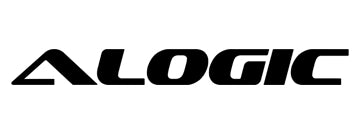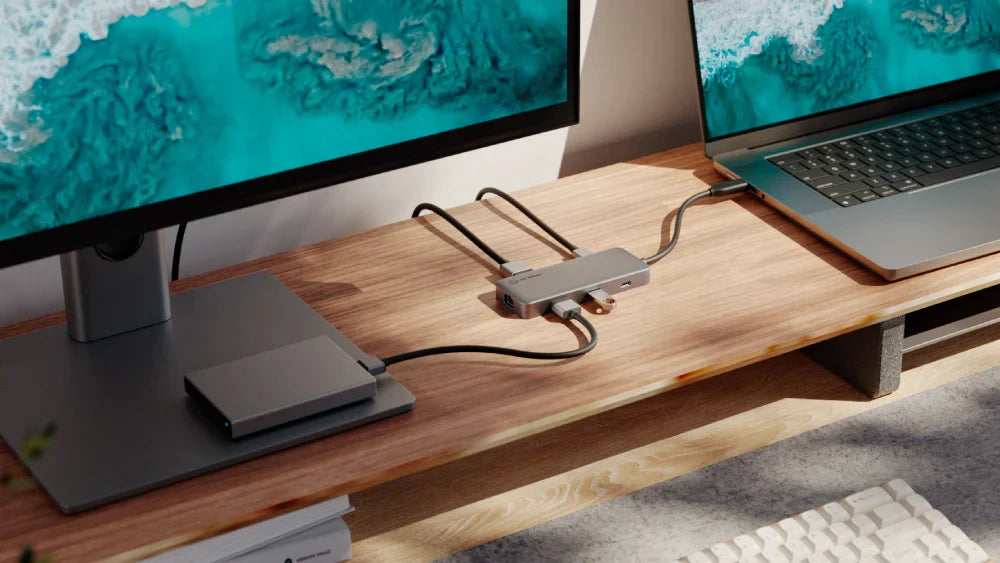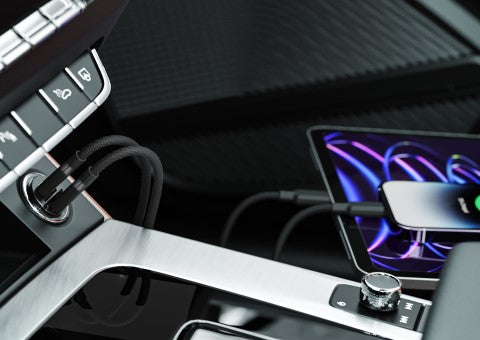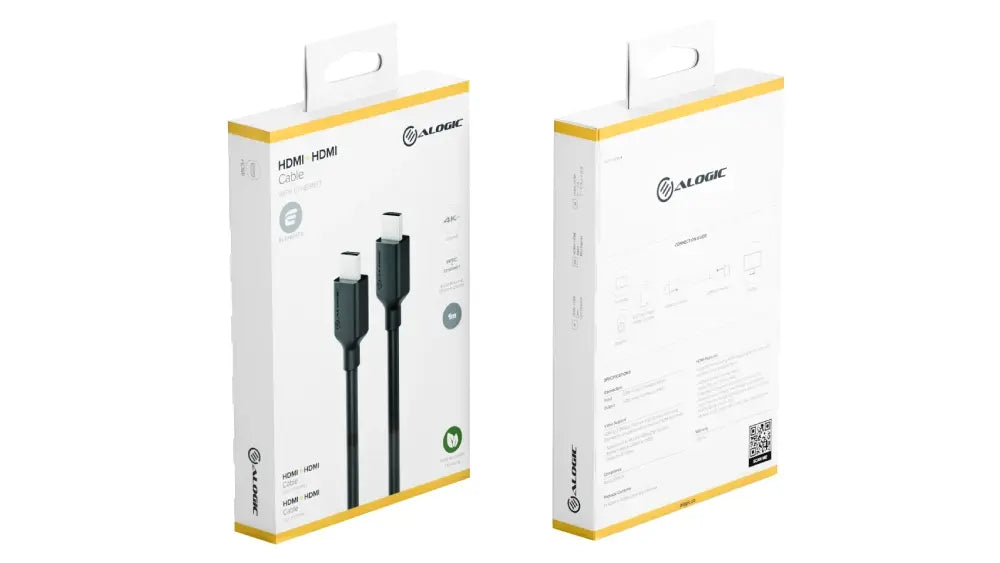USB4 is a specification that significantly transforms the way you work.
Even faster USB data transfer speeds are on the horizon.
This October, the USB Implementers Forum (USB-IF) announced the publication of the USB4 Version 2.0 specification. The headline takeaway here is that USB4 Version 2.0 is equipped to enable up to 80Gbps data transfer speeds over USB-C cables and connectors.
This is a huge shot in the arm for USB-C devices. Laptops equipped with the USB4 capabilities can already transfer data between connected displays, storage devices, hubs, and docks at speeds up to 40Gbps.
At the same time, many of us are still to discover the benefits of USB4 devices first-hand.
With that in mind, here's what you need to know about how USB4 could significantly improve life in your office and home.
USB v USB4 v USB-C – the difference explained
What is USB?
USB stands for "Universal Serial Bus". It's a communications standard for transferring information and power between host devices (computers) and external accessory devices, ranging from humble memory sticks all the way up to complex computer docking stations.
USB has been with us for roughly 25 years. Over this time, its capabilities have improved incrementally, mainly in terms of the speed at which information transfers between devices. Each time one of these improvements happens, USB standards are updated. New version numbers are allocated to the new standards to differentiate between the capabilities of different devices. This started with USB 1.0 way back in 1996, continuing with major revisions of USB 2.0 in 2001 and USB 3.0 in 2008. Since the advent of USB 3.1 in 2017, the most common maximum speed of USB communications is 10Gbps (roughly 800 times faster than original USB 1.0 devices from 1996).
Along the way, USB has also developed the ability to transfer large amounts of power between devices with USB Power Delivery (USB PD). It has also advanced its ability to transfer native video information to connect computers to monitors using DisplayPort Alternate Mode.
What is USB4?
USB4 is the latest evolution of the USB standard. It not only increases the maximum speed of USB connections to 40Gbps – quadrupling the maximum speed of most current devices – but also does it in a way that uses the available bandwidth more effectively when sending mixed data. This results in an even higher performance increase.
USB4 roots lie in Thunderbolt 3 – Intel's proprietary high-bandwidth communications protocol that operates over similar USB cabling and connectors. The big difference between USB4 and Thunderbolt devices are that USB4 devices have a wider range of capabilities. Intel mandates that every Thunderbolt device must have similar minimum capabilities and enforces that Thunderbolt devices must be certified before they can be sold. By contrast, manufacturers of USB4 devices have much greater freedom in determining what features to implement or leave out of their devices, and what level of performance they will have. As a result, Thunderbolt devices tend to come with a hefty price premium over USB4 devices.
USB4 devices remain backwards compatible with devices that are equipped with older versions of USB. However, when you use USB4 devices with earlier-version USB devices, you're limited to the performance and capabilities of the lower USB standard.
What is USB-C?
USB uses cables to transfer all of that information around. Since USB's inception, a number of different types of connector have been used, most notably USB-A and the newest connector – USB-C.
USB-C cables and connectors have been around since 2014. They contain more individual wires than the older USB-A cables – allowing USB connections made with USB-C cables to do more than what is possible with USB-A connections. As a result, USB-C is fast becoming ubiquitous, and is the current standard for connecting all high-performance USB devices.
USB-C Connectors
The USB-C connectors [at the end of your cables] appear as little metallic-looking tips. Usually, when you plug a USB-C cable into a port, you handle the housing that joins these connectors to the cable, and insert the connector into your USB-C port.
The rim of USB-C connectors is oval-shaped and symmetrical. This is subtle but more important than some consumers or businesses might appreciate. It means that, if you flip the connector 180 degrees, it still goes into the USB-C port. Try the same with a USB-A connector system and chances are fair you'll quickly become frazzled.
USB-C Ports
USB-C ports are the receptacles of the USB-C connector system. The standard 24-pin connector system carries functions including power, charging capabilities, and data transfer.
It's also good to know that USB-C ports are designed with a 10,000-cycle insertion and removal durability, meaning they are built to deliver reliable performance over a long lifespan as they absorb your pushes and pulls.
USB-C Cables
When you plug a USB-C connector into your USB-C port, the cable carries a combination of power plus data, and sometimes video signals between the USB-equipped devices connected to them. USB-C cables are available in different lengths, colours, and performance capabilities.
The basic capabilities of USB-C cables can vary in the following three ways:
- Length – 10cm to 5m+
- Power-carrying capacity – 60W to 240W
- Speed – 480Mbps USB 2.0 cables only intended for charging purposes or 5, 10, 20 or 40Gbps USB 3/USB4/Thunderbolt "full featured" cables.
Even USB devices may physically look the same from the outside, they can determine the capabilities of a connected USB-C cable and ensure the cable performs within its limitations, guaranteeing reliable and safe performance. In many instances, a tiny chip called an e-marker is concealed in the USB-C connectors on the cable. It advertises the cable's capabilities to USB devices when it's connected to them. The features it advertises may include power carrying capacity, and USB4 or Thunderbolt support.
What can USB4 do?
USB4 is a specification that helps indicate the performance capabilities of USB4-capable USB-C products.
When you see USB4 listed in the specifications of USB-C products, you have information about what these products do by way of power, data transfer, and display support.
The USB4 specification expands on the existing USB 3.2 version and USB 2.0 specifications.
USB4 is capable of data transfer rates up to 40Gbps [over 40Gbps-certified cables], but also specifies data rates up to 20Gbps. Some USB-C devices that support USB4 will feature data transfer speeds up to 40Gbps, but others will hit 20Gbps [something to keep an eye out for when shopping USB equipment for home or office].
USB4 features enhanced native support for high resolution video over USB 3.2. As the USB IF states, USB4 – which was announced in 2019 – is emergent at a time when a growing range of display products are operable with USB-C technology.
USB4, which also supports the USB Power Delivery standard, is developed to simultaneously use multiple data and display protocols. USB-C products equipped with USB4 capabilities can split bandwidth to better match the USB storage, display, and docking station applications of the end-user. What that means in practical terms is that your USB4 dock, for example, can optimise bandwidth allocation at a ratio that best supports your requirements to run a display, shift large volumes of multimedia, and run your USB devices.
What is the difference between USB4 and USB 3.2?
USB 3.2 is the sum name for all prior USB 3.x versions. Given USB nomenclature's history of breaking USB commentators into rashes, let's fast-forward to what you need to know about USB 3.2 today.
USB4, which has evolved out of the architecture of USB 3.2, can double USB 3.2 Gen 2x2's top data transfer speed of 20Gbps. It can also transfer data at eight times the speed of USB 3.2 Gen 1.
In reality few USB 3.2 Gen 2x2 (20Gbps) devices are available. Most USB 3.x devices are limited to the 5 and 10Gbps speeds offered by USB 3.2 Gen 1 and Gen 2. This means that USB4 offers an even higher performance advantage over USB 3.2 devices.
If you're a videographer, designer, or multimedia creator who works with lots of large multimedia files, it could make sense to favour a USB4-enabled device over USB 3.2, for the sake of productivity and efficiency.
USB-C devices equipped with USB4 also support the latest USB PD specification 3.1, which offers power delivery up to 240W.
Other things to keep in mind with regards to USB4 v USB 3.2
- Devices with USB 3.2 ports split bandwidth in a fixed way between a display and an external storage device, irrespective of the ratio of the display and storage device's bandwidth requirements
- USB4 devices must also provide at least 7.5W per port, almost doubling the minimum for USB 3.2 [4.5W]
- USB4 offers outstanding resolution support for monitors. A USB4 device can natively run a monitor at 8K @60Hz, compared with up to 4K for USB 3.2

USB4 v Thunderbolt 4?
It's probably quicker to outline the differences between USB4 [Version 1.0] and Thunderbolt 4, since they have so much in common. But given consumers are regularly confused by the similarities and differences between the two, let's break both down.
Some of the key similarities between USB4 and Thunderbolt 4 are that both use a USB-C connector and transfer data up to 40Gbps.
A key way to understand the difference between USB4 and Thunderbolt 4 is to note that Thunderbolt 4's minimum performance standards are higher than USB4's. USB4's data transfer speeds, for example, can hit 40Gbps maximum, but the minimum of 20Gbps is less than Thunderbolt 4's minimum [and maximum] of 40Gbps.
Thunderbolt 4's minimum video support is two 4K DisplayPort or HDMI monitors, each running at 60Hz via a compatible dock or adapter, whereas USB4 is one display [although it can support multiple monitors, depending on the computer].
The USB4 specification optionally supports PCIe tunnelling, but Thunderbolt 4 specifies 32Gbps operation is mandatory.
The USB4 specification is compatible with Thunderbolt 4-equipped USB-C devices. If you have a USB4 device, you can connect it to your laptop's Thunderbolt 4 port.
USB 4 Version 2.0
The USB4 story doesn't end here, however.
The USB Implementers Forum (USB IF) has been busily working on increasing the performance of USB4, resulting in the release of the USB4 Version 2.0 specification this October.
The USB4 Version 2.0 specification's characteristics include maximum data transfer speeds up to 80Gbps in either direction [40Gbps per lane, and total of four lanes] or an optional 120Gbps across three lanes; USB 3.2 data tunnelling to achieve speeds greater than 20Gbps; alignment with the latest DisplayPort and PCIe specifications, and backward compatibility with USB4 Version 1.0, USB 3.2, USB 2.0, and Thunderbolt 3.
According to the USB IF, USB4 Version 2.0 continues USB 3.1 and USB 3.2's evolution in bandwidth. Doubling data performance equips the USB-C ecosystem to deliver higher levels of functionality.
Consumers and businesses who want to introduce this technology into their workstations or life spaces can expect higher-performance displays, storage, and hubs and docks. In practical terms, they will potentially be able to connect higher-res displays with higher refresh rates than 4K @60Hz, or scale up from two 4K @60Hz display to three. This should especially appeal to dedicated gamers and professionals who are responsible for quality multimedia creation.
Something to note for the future, the USB4 version 2.0 specification will divert from the versioning nomenclature of previous USB specifications. New USB-C logos will specify the data transfer speed and power capabilities of USB4 Version 2.0 products, rather than message consumers by version name.
USB4 in the future
More details about the USB4 Version 2.0 are scheduled to be announced during the USB Developer Days, which are running November onwards.
Developers will learn more about the USB4 system overview, which will cover various topics, including tunnelling protocols, system and cable design, and USB4 compliance.
Given USB4 Version 1.0 is still emerging in the USB devices market – following its announcement in March 2019 – expect some time to pass before USB4 Version 2.0 equipped products find their foothold in the consumer market.
Meantime, it's helpful to be aware of the full potential USB products have to transform the lives of households and offices right now, and in the future.
Explore our USB docks, hubs, wall chargers, and cables today.

 EU
EU
 USA
USA Canada
Canada UK
UK Australia
Australia New Zealand
New Zealand Japan
Japan Singapore
Singapore UAE
UAE India
India




Leave a comment
This site is protected by hCaptcha and the hCaptcha Privacy Policy and Terms of Service apply.